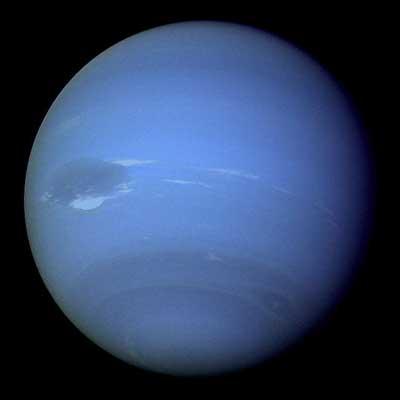
An image of the planet Neptune in our solar system as taken by the Voyager 2 spacecraft. Astronomers have discovered a Neptune-class planet around a nearby star, and measured a limit to the water in its atmosphere.
There are currently 340 known extra-solar planets (planets orbiting other stars). These planets range from one as small as only 1.7 earth-masses to a few dozen with masses ten to twenty times that of Jupiter. There has been only one, however, that resembles Neptune in our solar system, having a mass of about 23 earth-masses and a radius of about four earth radii: the planet orbiting the star GJ 436. Astronomers are trying to understand how planets form in general, but also how our solar system came to have the particular configuration that it does. Does the fact that there is only one confirmed Neptune-class planet among 339 others mean that Neptunes are particularly hard to form? Why? (But flash: SAO astronomers have discovered a second one since the paper being discussed here was written.)
Of these 340 planets, forty-five of them were discovered because they transit their star (their orbits take them in front of their star as seen from earth), and the planet around GJ436 is one of them. CfA astronomers Heather Knutson, Matt Holman and David Charbonneau teamed up with two colleagues to study this unusual object. They used the Hubble Space Telescope to obtain an infrared spectrum of the planet as it passed in front of the star. The planet has a very short year -- only 2.64 days to orbit the star (it is not at all like Neptune in this respect!) -- and so it is very close to the star and hence quite hot, about 700 kelvin (about 425 degrees Celsius). At this temperature, models predict that the planet's atmosphere, if it has one, should have all of its water converted to steam, and that steam should be apparent via its infrared spectrum.
The scientists found no evidence for steam, although their measured limit was very close to the range allowed by the model. The result means either that water is less abundant in the atmosphere than had been thought, or that somehow the models do not adequately account for it. The result, a remarkable examination of the atmosphere of a planet around a star thirty-three light-years away, helps to extend our technological capabilities while refining our understanding of how planets like those in our solar system may have formed.